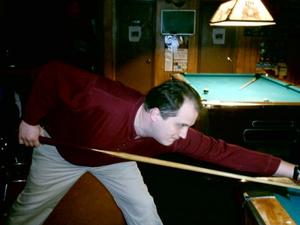Runes and Runic Magical Items
By: Ian R Malcomson
A sword +1. Pretty common, in most games. Some poor sod sacrificed a Con point for that. Makes you wonder why he bothered, and didn't save up to create a sword +3 instead.
Now what, say, if the sword +1 wasn't actually a magical item in itself, but was, say, a normal (well crafted) sword with a *rune* carved into it that provided the +1. Say 80-90% of swords are of *this* type, rather than true, Con-busting items.
To balance things, say that the runic swords are subject to dispel magic, magic resistance ("the demon made it's MR roll, so the sword isn't +1, so it didn't hit"), and can be ruined by simply dragging a nail (metal) across them. Say that, because of this, the rune might be ruined (20%? 10%? chance) whenever the weapon is used to hit. That makes magical swords that *can't* be so ruined a little more special.
Now create a 1st or 2nd level spell that Wizards used to create the runes. This way, the PCs could have a "magical" weapon at low-levels without the "what level do I give my PCs magical weapons?" quandary. It also means that the Con point for creating a +1 sword becomes worth it.
Runes could also be placed on things to provide AC or saving throw bonuses (an enruned Ring of Protection +1 as opposed to a true Ring of Protection +1), give (limited and charged) magical spell-like properties to items, etc. The number of runes that can be placed on an item would be limited by size. The type of runes a wizard can carve using his 1st or 2nd level spell should be limited by level (of the wizard).
RuneQuest has it's bladerunes. Rolemaster has it's spirit runes. Now, with the above, AD&D can have it's own runic magical items too.
I've got something of a write-up for runic properties for my campaign, which is derived from Saxon, Nordic and Celtic runes. For the purposes of what I was suggesting, though, something more general is needed (that individuals can then customise to their own campaigns).
Scribe Rune (Enchantment/Charm)(Sphere: All)
Level: 1 (Priest/Druid), 2 (Magic-User)
Range: Touch
Components: V, S, M
Duration: Special
Casting Time: 5 rounds
Area of Effect: One item
Saving Throw: n/a
This spell allows a spellcaster to scribe one rune on one item. The rune can have one property, selected from the following list, depending on the caster's level. Multiple runes may be scribed on a single item, but the size of the item limits this. In general, a blade the size of a longsword could hold up to 6 runes. A dagger could hold 2. A large shield could hold 20. This reflects not only the physical size of the item, but the "runic capacity" of the item - the specifics are left to individual DMs.
| Rune Effect | Priest Level | Wizard Level |
| +1 to hit | 1 | 3 |
| +1 to AC | 3 | 5 |
| +1 to Damage | 5 | 7 |
| +1 Saving Throws | 7 | 9 |
| Spell: Level 1 to 3 | 11 | 12 |
| Spell: Level 4 to 6 | 14 | 14 |
| Spell: Level 7 to 8 | n/a | 16 |
Bonus runes: these remain until either dispelled (at the level of the caster), destroyed/disrupted (simply damaging the rune will negate it's effects), or accidentally released (see below). "To Hit" and "Damage" bonus runes are affected by the magic resistance of any creature they are used against (which may reduce the weapon below the necessary "+" value to affect it). Bonus runes are cumulative (ie, two "to hit" runes scribed on the same weapon will yield a +2 bonus), but are *not* compatible with "true" magic - a +1 to hit rune scribed on a true sword +1 will *not* yield a +2 sword.
Spell runes remain until they are used - a single rune contains a single spell "charge", good for a single casting. A spellcaster cannot scribe a spell rune for a spell he does not personally know (but not necessarily have in memory). Spell runes are "cast" at the level of the scribing spellcaster. Multiple spell runes provide multiple "charges" or additional spells.
Runes are subject to being accidentally released. If an item upon which a rune is scribed is used in a violent fashion (eg, in combat), or is forced to make an item saving throw for any reason, there is a 10% chance that the rune will be released. Spell runes release their full effect, centered on the item upon which they were scribed. Bonus runes are simply destroyed. If an item *fails* any item saving throw, the runes scribed on it are automatically released.
The DM may allow certain individuals to possess the knowledge of runic enchantment *without* the use of the scribe rune spell. In this case, the DM should design specific powers for specific runes, and treat each individual rune as a seperate proficiency/skill. These runes carry a 30% chance of accidentally being released, automatically being released if the item requires an item save, regardless of whether the save was successful or not.
Characters also have the option of becoming a Rune Wizard, one who specalizes in rune casting.
Submit to: ![]() Digg
Digg ![]() Del.icio.us
Del.icio.us
Related Links
Copyright © 1998-2006 Phillip Riley
Last Updated Sat Aug 11, 2007


